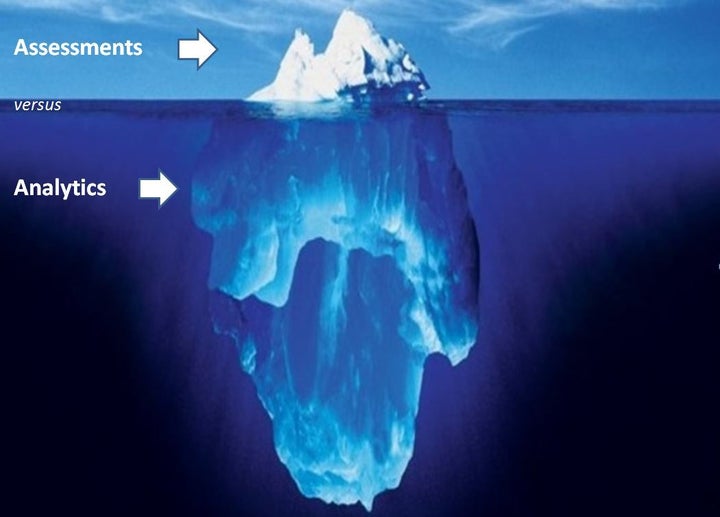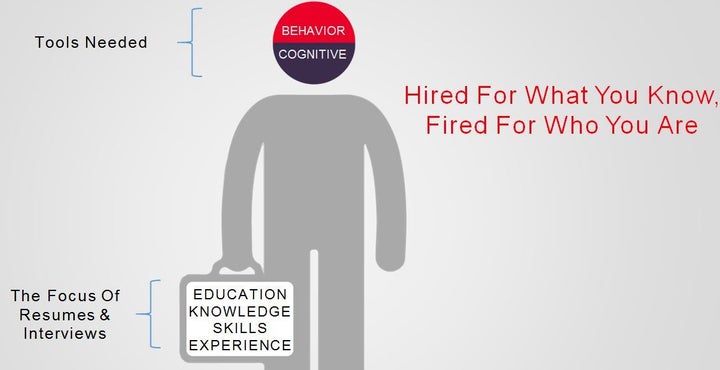
I’ve been assessed to death. Myers-Briggs (3 times), Strength Finders (1.0 and 2.0), Firo-B, EQi, Caliper, Profiles XYZ, Hogan-This/Hogan-That, Kurlan, SSAT, OMG, PPA, 16pf, Workplace Motivators, Talent Insights, and 18 versions of DISC- the bar-graph version, the ven-diagram version, the cross-axis version, DISC for Sales, DISC with birds (eagle), DISC with fish (shark), and DISC for pets (apparently, my dog has the same profile as Jack Welch, which sounds ridiculous until you realize that he actually DOES run the house…)
I have a new client that is desperately trying to grow his sales team with the best candidates possible. We discussed assessments and he said, “Enough already!” I’ve met with over 80 business owners this past quarter, and the other phrase I hear a lot is, “So what?” Everyone has been assessed to death. The awareness assessments bring is only practical if it’s applicable immediately, does what you intend it to do, and has a measureable impact on ROI.

We’ve talked about choosing the right assessment and why people-data is needed, but when it comes to being practical, none of that matters if you aren’t getting results.
My new client spent over $3000 per candidate on assessments and was still experiencing turnover. Turnover’s expensive. He had to attract, recruit, assess, hire, train, and onboard the replacement. He needs a salesforce of 20 to hit his goals and has never had more than 15 at any given time, due to turnover. Turnover is not only costing him money, it’s impeding his ability to grow.

He needs a highly technical engineer who can sell his product to other highly technical engineers. These folks don’t grow on trees and the onboarding required is a huge investment of time, money, and resources, and can take up to a year to fully train someone. So, when someone leaves, it hurts the bottom line and impacts cash-flow.

His candidates endured more than three hours of testing. He swears that’s why he lost some top talent. The market has shifted. When it was an employer’s market, you could make candidates jump through hoops. Currently, it’s a talent-driven market where the best candidates have options and choices.

The assessments he used were personality tests based on observable behavior. They’re good communication tools, but they aren’t predictive, nor are they considered workforce analytics. They weren’t using a cognitive assessment, which is the best predictor of job performance, as well as general cognitive ability (the ability to learn and adapt to change.)
An Industrial Organizational Psychologist had to debrief him on every report (that’s not cheap.) There was no benchmarking tool to establish a baseline of the needs for the open position. The assessments weren’t EEOC-compliant, nor were they validated for use in hiring. So, in addition to all of this time and expense, he was exposing himself to potential litigation.

He needed powerful workforce analytics, not just any assessment. It’s hard to predict performance based solely on observable behavior. We tend to hire people for what they know and fire them for who they are. You need to know what’s driving their behavior to know not just what they can do, but what they are likely to do, in order to maximize people’s performance.

So, we put in The Predictive Index (PI). It’s EEOC-compliant, legally-defensible and validated for use in hiring. PI is also predictive of job performance, and provides serious workforce analytics. It’s a suite of solutions (a Job Assessment/Benchmarking tool, Behavioral Assessment, and Cognitive Assessment) working in concert to provide data-driven, predictive, workforce analytics.

The candidate experiences a total of 15-18 minutes of testing. That’s it. And it’s a subscription-based pricing model, so not only is it solving his problems and saving him thousands, he can use it across his entire organization (not just his sales team) from the C-suite to the summer intern. What good are workforce analytics if you don’t collect data on the entire workforce?
Using the analytics, he immediately saved money, hired five new salespeople, trained them faster than ever before, eliminated turnover, increased revenues, and is now focused on acquiring a competitor. PI helps with that, too, but that’s another article…
Thanks for reading - If you enjoyed this article, please click the Like button above and let me know! (and if you like it, why not share it?)

About the Author:
David B. Nast owns Nast Partners based in the Greater Philadelphia area. David is an Award-Winning Certified Business Coach with over 25 years of experience in Executive Coaching, Leadership Development, Talent Management, Training, Career Coaching, Executive Search, and Human Resources.
He has coached thousands of CEOs, Business Owners and Executives.
For additional insights from David, visit his LinkedIn Pulse Author Page and follow him on Twitter @DavidBNast. You can also email David at dave@nastpartners.com.
